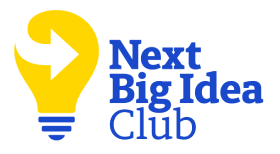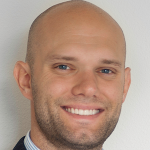Nelson Repenning is a professor at the MIT Sloan School of Management and director of MIT’s Leadership Center. Donald Kieffer is a senior lecturer at MIT Sloan School of Management, founder of ShiftGear Work Design, and was previously vice president of operational excellence for Harley-Davidson.
What’s the big idea?
Managers and business leaders often find themselves confronted with a lot of employees earnestly trying to get projects done, meanwhile not seeing much get accomplished. A lot of companies struggle with workflow design challenges that stand in the way of getting real work done. Fortunately, for these similar obstacles there exist solutions that apply across industries.
Below, co-authors Nelson and Don share five key insights from their new book, There’s Got to Be a Better Way: How to Deliver Results and Get Rid of the Stuff That Gets in the Way of Real Work. Listen to the audio version—read by Nelson and Don—in the Next Big Idea App.
1. Start small.
The typical way managers think about major changes is in terms of big programs, armies of consultants, coffee mugs, banners, and weeks of training from fat binders in expensive hotels. We take a much different approach: Start small.
This went against everything I had learned when I was a manager, but there was a particular day when the lights went on for me. I was working with a guy from Toyota, Scott Borg, who was helping me in the engine plant at Harley-Davidson. Scott was having a hard time getting a point through to me, and I was getting frustrated. Finally, he said, “Let’s just take a walk.”
He took me out to the center of the plant, a 300,000-square-foot area with 800 people at the two main aisles. We called those main aisles Hollywood and Vine. There were people moving everywhere. It was busy. He made me stand there and asked me, “Don, tell me what you see.” I noted that it’s a busy place. He repeated, “Just tell me what you see.” I took a breath and described the scene: “I see a guy driving a fork truck. He stopped over there, talking to the guy that’s making cylinders, and he has got a pallet full of finished cylinders on his fork truck. I assume he’s going to take them to the assembly line.” Next, Scott asked, “What’s the design of the work? What’s he supposed to be doing right now at this time of the day?”
Suddenly, I saw his point. There was a design, but it was a terrible one. Give the fork truck driver a radio and let people call him to tell him when they want to move stuff around. We were building 350 engines a day with 800 people on the same schedule. Yet everyone was working to their own drumbeat.
The first thing I wanted to do was organize that guy’s day in terms of a schedule for delivering parts to the assembly line. If we fixed his job, then the other four truck drivers and operators would quickly say, “Hey, that’s way better for us. Help us fix our work that way.” And then work will get done faster because the new way gets rid of all the junk people, bureaucratic mess, confusion, and frustration, so people can focus on the work they’re supposed to do. They love it.
2. We have too many emails and meetings.
Chances are, we use email when we should have a meeting, and we have meetings when we probably should send an email. Individuals have two ways of moving work from one person to the next: handoff or huddle. A handoff is exactly what it sounds like. The work is handed from one person to another with little or no communication. Handoffs work well for transferring many types of work. For example, when I get my paycheck every month, there’s no negotiation required.
In contrast, huddles should be used when the successful transfer of work from one person to the next requires two or more people to talk about it. It could be a problem that needs to be solved, a decision that needs to be made, or some recent change that needs to be clarified. Either way, the relevant parties need to come together and discuss it.
“Chances are, we use email when we should have a meeting, and we have meetings when we probably should send an email.”
The trouble comes when we use a huddle at a time when we need a handoff, or vice versa. When we use handoffs to transfer complex information, the result is typically lots of expensive back and forth—what we sometimes call ineffective iteration. How many of you have been on long email chains where five to 10 people email back and forth endlessly trying to resolve a problem that probably could be solved in five or 10 minutes if they just got in a room together?
Conversely, sometimes we use huddles when all we need is a handoff. When this happens, we get a long, boring meeting. How many of you have sat through a five-page PowerPoint presentation or project update that reported no issues and needed no discussion? In those cases, please just email me the status report, and I’ll go through it if I need to.
If you make the wrong call between huddle and handoff, the result is lots of emails that are being attended to either early in the morning or at night because the bulk of your day is spent in long, boring meetings that don’t get real work done.
3. You are not in control when targets are missed.
Adding more meetings, rules, and status reports gives a false sense of security that you are in control. But you are not in control. The traditional approach—of setting targets and adding punishment and oversight when they’re missed—not only doesn’t help, but it also leaves you on the sidelines instead of in the game. It causes people to do more of what wasn’t working and to make more private workarounds.
In our approach, we moved from just getting work done to making better and innovative ways an integral part of the job. There are four elements that make this change:
- Clear targets with an intent or a why that everyone understands. This allows people to make little decisions on the fly that deliver what was intended rather than strictly what was said.
- Metrics that support the main target to ensure that the desired outcome is delivered. For example, please reduce the cost by 10 percent while still delivering on time, and ensure that quality does not slip. Otherwise, people are prone to cutting corners and gaming the system just to get the lower cost.
- Make the activities in the plan explicit and visible to all so that everyone can see how the activities tie to the results.
- Real-time feedback to see if those activities are delivering as predicted. If they are, how can we do more of them or do them faster and better? If not, why not? And what can we learn from this?
This transformed the definition of success from just carrying out the plan to a series of intentional experiments, where learning became an integral part of the job, day-to-day, and we met targets while innovating along the way. This is the dynamic part of dynamic work design. Every problem encountered and lesson learned is a doorway into better and more innovative work.
4. Putting less work into the system will help get more done.
Research shows that most systems are overloaded with too much work. R&D systems are notoriously overloaded, often having three to five times as many projects in them as they have capacity to execute. The workflow for most organizations looks like a highway leading out of the city to the beach on a Friday afternoon. It’s just a huge traffic jam. Most organizations are staffed by smart, competent people who have lots of good ideas that they really want to get done, but that traffic jam is more expensive than you think.
First, it takes a lot longer for a project to navigate its way through the system when there’s a lot of other work in the way. Second, when everything is moving slowly, managers constantly shift priorities in the hopes of getting the most important tasks done. Constantly shifting priorities can kill productivity because people must drop what they’re working on to switch to another project and reset their focus.
Technology is not as helpful as people think. A recent study suggests that we switch between apps on our computers approximately 1,200 times a day and spend nearly four hours a week simply moving from one application to the next. We wouldn’t interrupt a pilot while they are landing a plane or ask a doctor performing heart surgery to stop and go work on something else, but we essentially ask knowledge workers to interrupt their important tasks over and over again. Each day, this comes at a huge cost in terms of productivity.
The trick to good work design is allowing people to focus on one task without interruption until it’s completed, and then have them move on to the next. One solution is for senior leaders to identify the top 10 projects they want to complete and then rank them in order of importance. Then, leaders can create a culture whereby if you’re on the critical path for project number one, you don’t work on project number six. When you can get that kind of discipline with the appropriate loading, the work will flow, and you’ll begin getting things done much more efficiently.
5. Fancy workflow management hides underlying problems.
Imagine if air traffic controllers had to do their work using spreadsheets and instant messaging. Even if they had real-time updates on plane locations, they would be in the form of numerical coordinates, and it would require a significant amount of cognitive work to determine which planes required the most attention and when they were getting too close to each other. We often ask managers to work this type of way.
Fortunately, air traffic controllers don’t actually work this way. They have a radar screen that gives a visual representation of the location of the planes in their area, making it far easier to spot trouble and take action. When managers use similar visual representations, their work often becomes similarly effective.
“You can do something similar for all knowledge work in the office by representing activities with sticky notes on the wall and mapping them against targets.”
The value of visualization became clear to Don when he had to temporarily substitute for a vacationing production supervisor at Harley-Davidson. The manufacturing areas worked hard to make enough parts to feed the main assembly line. At the daily production meeting, each supervisor would tell a story about how they were running close to the edge, but they would be okay. Of course, they all had problems, but they were hoping that their colleagues had bigger ones and that their colleagues would shut down the line first, giving them time to catch up without a lot of managerial help and oversight. It was a big game of chicken where people increasingly accepted the underlying problems as business as usual.
When he became plant manager, Don changed all this by moving the stores of finished parts from the manufacturing areas to the main aisle in specially marked, timestamped areas on the shop floor. Now, a quick walk down the main aisle showed exactly where everyone stood relative to the schedule, and problems became obvious in real time.
You can do something similar for all knowledge work in the office by representing activities with sticky notes on the wall and mapping them against targets. This allows the team to stand together and see the state of the work and what’s getting in the way of getting it done. Meetings that were previously full of stories quickly become high-powered collaboration sessions where everyone works to figure out how to keep the work moving as efficiently as possible.
Having a common radar screen that shows the state of important work and any underlying issues brings clarity and accountability. Teamwork follows naturally.
Enjoy our full library of Book Bites—read by the authors!—in the Next Big Idea App:










